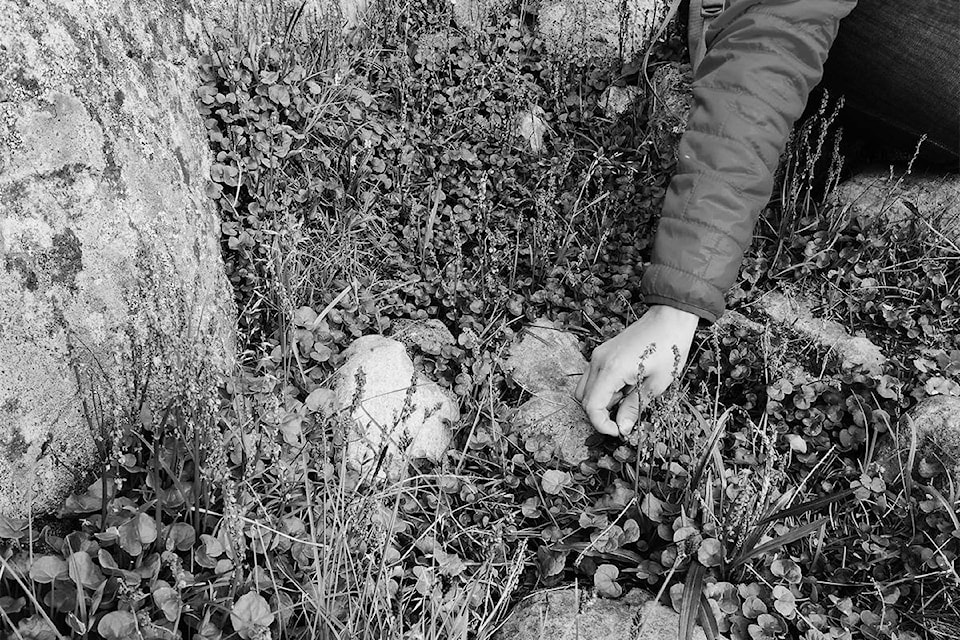A Whitehorse resident has released a Jane Glassco Northern Fellowship research paper regarding the harvesting of wild plants.
Kelly Panchyshyn is one of three Yukoners who wrote a paper through the fellowship. She spoke to the News on June 17 about her paper, Accounting for our Plant Citizens: Proposed Collaborative Approaches for Supporting Wild Plant Harvest in Whitehorse, Yukon.
She explained that she could bring whatever subject she wanted to the table and she was hearing in the community of some concerns about the shifting availability of wild harvest resources, particularly plants.
Before she applied for the fellowship, she was working as a public servant with the Yukon government Executive Council Office. This allowed her to gain access to information that sparked her interest in wild harvest.
“I was reviewing a lot of municipal, territorial and federal land-planning documents and policy documents around harvest resources,” Panchyshyn said. “I was not seeing a lot of coverage for non-timber forest resources.”
She said she wanted to fill this gap regarding the harvesting of medicinal or food plants and explore the topic further. Pursuing this research excited her and drew her to apply for the fellowship.
“Another big thing that motivated me to apply is, I was interested in meeting fellow youth in the North that were interested in social and environment movements and justice,” Panchyshyn said.
Her research saw her interviewing harvesters in the Whitehorse area. A lot of them spoke of barriers regarding harvesting, including time restraints and shifts in the weather and environment.
She explained that some plants were blooming faster or for a shorter period, which affects availability. The time issue stems from a harvester’s schedule not being flexible to deal with this.
Another issue was the loss of harvest areas. This forces people to have to travel further to find the desired plants.
She said there are a variety of edible and medicinal plants in the Whitehorse area, and that berries are a popular plant to harvest. This includes blueberries, cranberries and high bush cranberries for example.
Different types of fungi like mushrooms are popular as well. Tree bark and wild roots are harvested too.
“Most of my interview participants talked about harvesting berries and different parts of flowers,” Panchyshyn said.
She took those challenges and spoke with several land planners from the Kwanlin Dün First Nation, the Ta’an Kwäch’än Council and the City of Whitehorse about addressing these barriers. In these talks, they developed three options.
The first was to develop a database of wild plant harvest areas around the city. The goal was that this database would help inform planning decisions.
“The idea being that if we know what areas are popular and important to harvesters culturally, for sustenance or for practical reasons, how can we ensure that these areas are protected,” Panchyshyn said.
The second option was to collaborate on stewardship programs and educational campaigns about plant harvest along Whitehorse’s parks and trails. She pointed out there are policies in the park plans that would support First Nations and community educational campaigns regarding over-harvesting and improper harvest.
The last option was to allow wild plants to be harvested before development of land begins. This will mean coordinating with community food security groups and First Nations to allow harvesters on a site before development to make use of the resources.
Her paper advocated for the second option.
“That was because it had the most potential to create lasting impact,” Panchyshyn said.
She added that education could help solve the improper or over-harvest of plants. The proper process of harvesting a plant would be made available and thus the chances of plants growing again next season increases.
The stewardship and education would help get the word out.
She said she was surprised to see how many places use wild plants in Whitehorse.
“We see it in our small business sector, so we have a lot of craftsmen who use harvested wild plants from the Whitehorse area in their soaps, teas and recipes,” Panchyshyn said.
Tourism factors in, as some chefs use harvested wild plants in their cooking. It also pops up in healthcare as a program through the Whitehorse General Hospital uses harvested plans in providing traditional medicine to First Nations patients.
Carcross/Tagish First Nation resident Ashley Carvill and Whitehorse resident Julianna Scramstad also wrote fellowship papers. Carvill’s paper was called Turning to Traditional Processes for Supporting Mental Health. Scramstad’s paper was called Learning to Listen: On Racism and Power in Yukon Education.
The Jane Glassco Northern Fellowship is an 18-month policy and leadership development program. It is available for northern Canadians between 25- and 35-years-old.
Fellows write a policy research paper and receive skills training, mentorship and opportunities to network. The paper is on a northern issue and will be shared publicly.
Contact Gord Fortin at gord.fortin@yukon-news.com
